CalCOFI Conference 2021
Social-ecological indicators to support marine management in a changing climate
December 1st & 2nd, 2021
10:30am - 3:00pm (PST)
With special events following each day
Hosted By:
California Department of Fish and Wildlife
In Association With:
Scripps Institution of Oceanography
Southwest Fisheries Science Center
For conference inquiries,
please email Erin Satterthwaite, CalCOFI Coordinator.
Healthy, productive, and resilient marine ecosystems are integral to sustainable coastal communities. Currently, anthropogenic activities and coincident changes in climate are affecting ocean ecosystems and human well-being. As these impacts increase, the need to develop robust management responses also grows. Developing reliable social and ecological indicators, and targets that can be monitored and adaptively managed, is central to this process. Indicators are a measurable quantity relating to the social, ecological, or environmental dimensions of the ocean ecosystem that can be used to describe or predict a more complex state such as the “health” of an ecosystem, fishery stock, or human well-being.
The goal of the CalCOFI Conference 2021, “Social-ecological indicators to support marine management in a changing climate”, is to explore and refine existing social, ecological, and environmental indicators within the California Current. We invite speakers to review the indicators, describe their strengths and weaknesses, provide examples of how they are currently being used to inform ocean management, and provide suggestions for new indicators that could be developed. We hope this conference will be helpful to the CalCOFI and West Coast community by providing perspective on where we’ve been, where we need to go, and what new innovations are needed with regard to environmental, ecological, and socioeconomic indicators in a time of rapid environmental change.
This year’s virtual CalCOFI Conference 2021 was held online December 1st & 2nd. The conference consisted of keynotes, panels, roundtables, and contributed talks related to ocean observing data in support of environmental, ecological, and social indicators, ocean management, and understanding the State of the California Current. Please see Conference Agenda below for links to recordings.
Conference Agenda
Social-ecological indicators to support marine management in a changing climate
December 1st, 2021
10:30am - 11:30am - Welcoming Remarks & Keynote Addresses
Julia Coates, CDFW CalCOFI Program Lead, CDFW
Samantha Murray, Executive Director, Marine Biodiversity and Conservation & Vice President, Fish and Game Commission
William Douros, Regional Director, NOAA Sanctuaries West Coast Region
11:30am - 12:45pm - Panel: How can ocean observations support environmental, ecological, and socioeconomic indicators in the California Current?
Mia Lopez, Vice Chair, Coastal Band of Chumash Nation
Rosemary Kosaka, Economist, NOAA SWFSC
Donna Schroeder, Marine Ecologist, BOEM
Rachel Seary, Postdoctoral Scholar, UCSC & SWFSC
Merrick Burden, Executive Director, Pacific Fishery Management Council
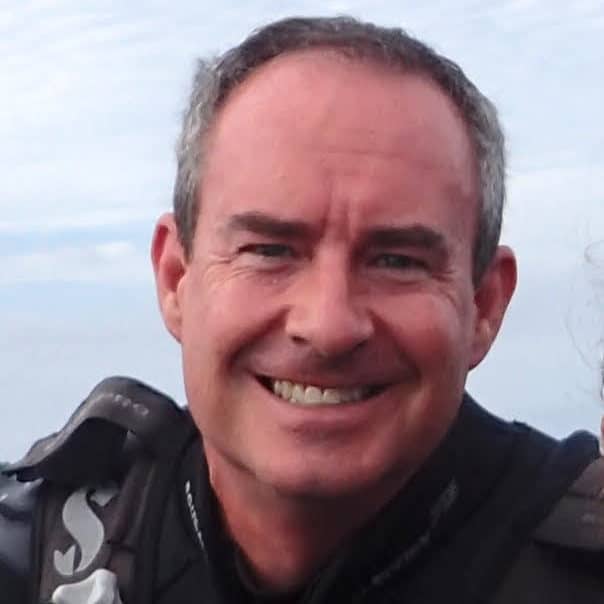
Brice Semmens (Moderator)
SIO CalCOFI Director,
Scripps Institution of Oceanography

Mia Lopez
Vice Chair,
Coastal Band of Chumash Nation
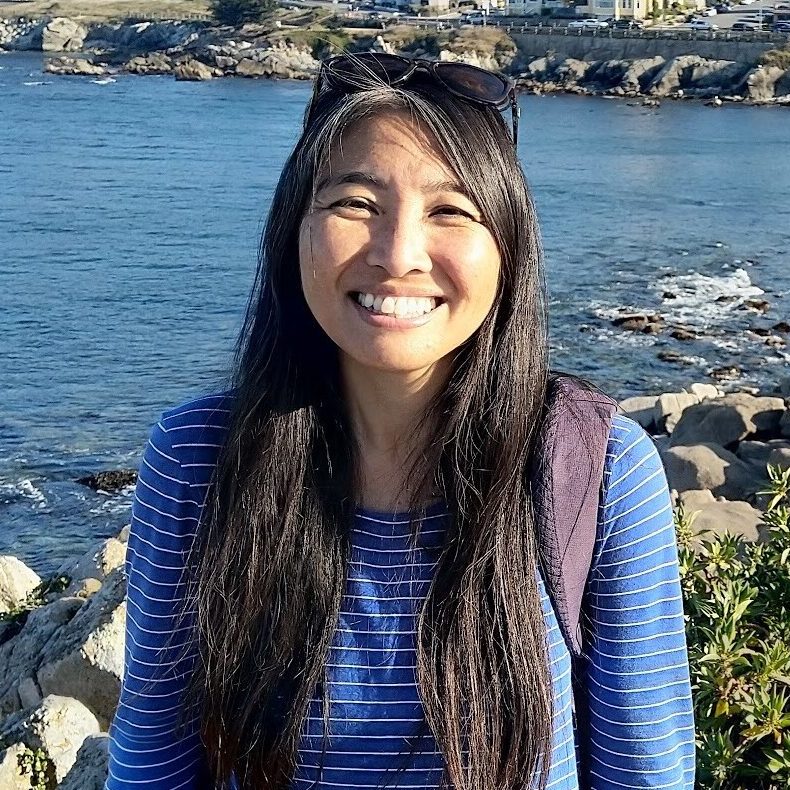
Rosemary Kosaka
Economist,
NOAA SWFSC
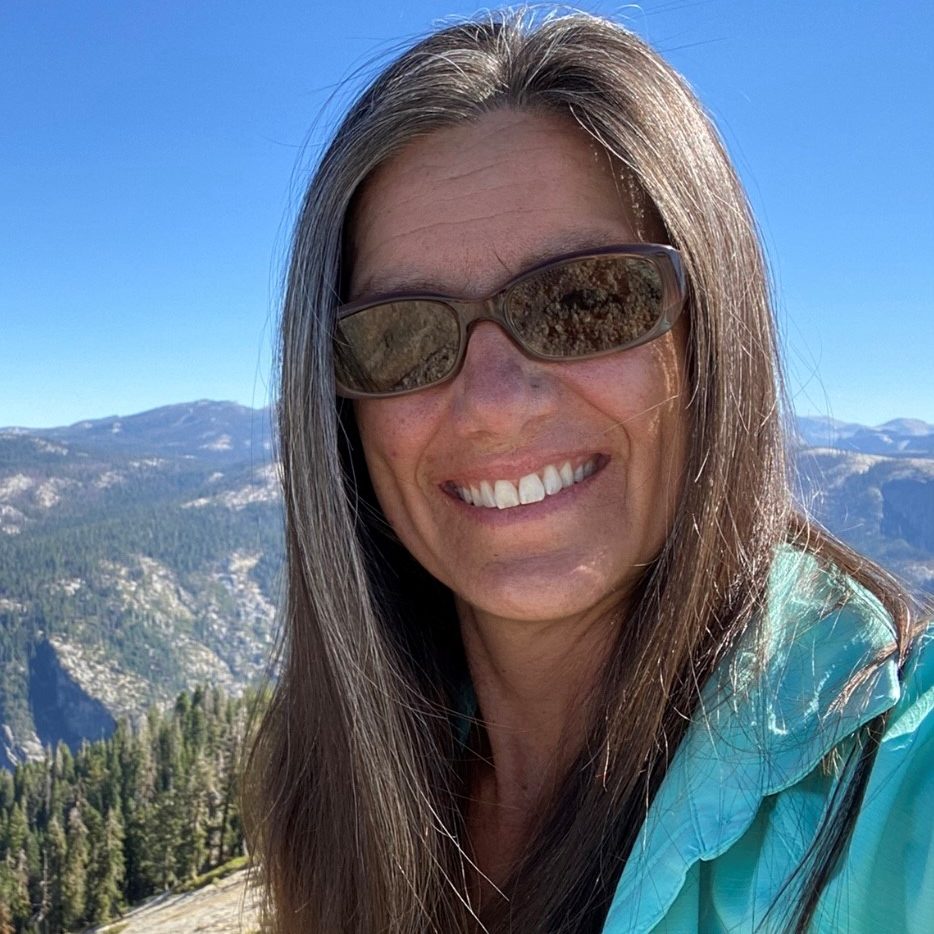
Donna Schroeder
Marine Ecologist,
BOEM

Rachel Seary
Postdoctoral Scholar,
UCSC & SWFSC

Merrick Burden
Executive Director,
Pacific Fishery Management Council
12:45pm - 1:15pm - Break
1:15pm - 2:30pm - Roundtables
***All roundtables will be concurrent & participants will be in one roundtable for the entire session***
Session Lead:
Alessandra Burgos, UCSB
Session Co-leads:
Bob Miller, UCSB
Nick Nidzieko, UCSB
Erika Eliason, UCSB
Corey Garza, CSUMB
Clarissa Anderson, SCCOOS
Barbara Block, Stanford
Emmanuel Di Lorenzo, Georgia Tech
Overview:
The goal of RESON (Regional Ecosystem Services Observation Network) is to create a framework to guide the establishment of a marine biological monitoring network in central and southern CA. This roundtable will review RESONs strategy to advance technology to measure ecological indicators to understand the changing ecosystem. Specifically, we will be reviewing our approach for a workshop to gather input on technology to monitor several marine species. The goal of this monitoring is to inform on biodiversity, animal migration, and ecosystem function.
Goals:
Gather input on RESONs ideas to advance technology to measure ecological indicators to understand how ecosystem services are impacted by organismal ecophysiological stress in the coastal ocean. Objective: Review ~2 ideas for the RESON conceptual framework and our proposal for hosting a workshop to review novel monitoring technologies. Outcome: Prioritize the ideas so we have a clearer understanding of how to proceed with our winter workshop. Expectations from participants: We will ask participants to provide comments on RESONs conceptual framework, and on the species RESON plans to explore in more depth during the second workshop. This will be an interactive conversation with participants.
Session Lead:
Karen McLaughlin, Southern California Coastal Water Research Project
Session Co-lead:
Alex Harper, MBARI
Overview:
The California Current is predicted to undergo some of the most rapid changes in ocean acidification, deoxygenation and temperature in the world’s oceans, potentially resulting in major ecosystem disruptions. Regional monitoring can be a powerful tool to characterize climate change impacts and shifting baselines in our coastal habitats. Regional monitoring can provide managers robust data on shifting reference condition(s) as a benchmark for assessing magnitude and rate of change, evaluating cumulative impacts from multiple stressors, and assessing and ranking habitat quality and biological impacts thereby forming a solid scientific foundation for climate change policy making. Regional monitoring programs have implemented new indicators, metrics, and assessment frameworks to evaluate ecosystem impacts due to climate change. However, because the science behind these new metrics is new and evolving, unifying best practices to compare across monitoring programs is still needed. The objective of this roundtable is to summarize efforts to incorporate climate change indicators and metrics into regional monitoring programs. We will discuss best practices for monitoring and assessment and ideas for calibrating different sampling protocols and across indicators to build towards interoperable regional datasets among monitoring programs.
Goals:
We would like to collate an inventory of biological indicators and metrics monitoring programs are using for climate change monitoring, including collection methods and analytical methods. We would like to gather ideas on how to calibrate these datasets across programs so that data can be compared across agencies.
Session Lead:
Jessica Rudnick, CA Sea Grant – Delta Stewardship Council
Session Co-lead:
Kevin Travis, California State Sea Grant Fellow, Ocean Science Trust
Kristen Goodrich, Program Coordinator, Tijuana River National Estuarine Research Reserve
Overview:
There is a growing interest in integrating social science into ecosystem-based management approaches, for reasons ranging from improving design of programs that more effectively motivate conservation behaviors, to improving learning and coordination between actors, to integrating equity and improved stakeholder engagement throughout planning and implementation processes. Yet, there remains a lack of understanding of when and where social-ecological ecosystem management approaches are being implemented, what the barriers and opportunities for this integration look like, and how effective these programs are at achieving desired goals. This roundtable offers the opportunity for participants to discuss examples of where they have seen or been involved in effective integration of social and ecological monitoring systems, the benefits and challenges to integration, and what needs to be better understood in order to effectively and efficiently continue to integrate social and ecological monitoring to inform ecosystem management.
Goals:
1: Share examples of social-ecological monitoring systems & indicator frameworks;
2: Develop a list of good examples of social-ecological indicators for ecosystem-based management;
3: Improve understandings of benefits and barriers to integrating social and ecological monitoring to inform management.
Session Lead:
Desiree Tommasi, Institute of Marine Sciences, UCSC / NOAA SWFSC
Session Co-leads:
Stefan Koenigstein, Institute of Marine Sciences, UCSC / NOAA SWFSC
Barb Muhling, Institute of Marine Sciences, UCSC / NOAA SWFSC
Justin Suca, Institute of Marine Sciences, UCSC / NOAA SWFSC
Andrew Thompson, NOAA SWFSC
Robert Wildermuth, Institute of Marine Sciences, UCSC / NOAA SWFSC
Overview:
Forage fish species serve a critical ecological and economic function in the California Current Ecosystem (CCE). As a link between the planktonic food web and higher trophic levels, they support many top predators including seabirds, protected or endangered marine mammals, and commercially valuable species. There are also valuable commercial fisheries targeting forage species themselves. Dynamics of sardine and anchovy in the CCE are characterized by boom and bust cycles driven by oceanographic variability. This high variability in sardine and anchovy recruitment affects livelihoods of fishers and predator dynamics, presenting challenges for management. Depletions in forage populations can be amplified by fishing, and it is important for management to detect shifts in abundance within an adequate time-frame to develop robust responses. Operationally, environmental indicators of recruitment can help managers anticipate changes in productivity. Strategically, when linked to projections of future ocean change, they can inform development of future scenarios and ecological models to help assess climate risk on forage fish, dependent predators and fishing communities. It was previously thought that warm periods favor sardine and cool periods benefit anchovy, and current sardine management measures include a sea surface temperature (SST) index to account for lower productivity at low SST. However, the recent decline in sardine productivity during a period of high SST has brought into question the robustness of the sardine recruitment-SST link. In this roundtable, we aim to gather regional experts in sardine and anchovy dynamics to review past hypotheses of drivers of sardine and anchovy recruitment as well as the latest insights from empirical and mechanistic models and isotope analyses. We will also discuss ways forward and next steps in the development of environmental indicators for sardine and anchovy that could be integrated into tests of current and alternative management strategies for forage fish in a changing California Current ecosystem.
Goals:
1: Review the hypotheses of drivers of sardine and anchovy recruitment that have been proposed in the literature
2: Review recent empirical and modeling work shedding new light on potential drivers of sardine and anchovy recruitment
3: Review methods to develop environmental indicators of recruitment given a multivariate set of potential drivers
4: Develop consensus on what recruitment hypotheses should be prioritized for testing in the planned management strategy evaluation work
5: Develop a list of available data or model output that can be used to develop the indicators
Session Lead:
Zachary Gold, NOAA NWFSC
Session Co-leads:
Andrew Thompson, NOAA SWFSC
Kelly Goodwin, AOML
Overview:
‘Omics approaches have opened entire new fields of research within the past decade and continue to advance rapidly. We will discuss various application of ‘Omics approaches including eDNA metabarcoding, metagenomics, qPCR/ddPCR, metabolomics, and proteomics to CalCOFI samples and how these tools can help us answer better manage marine ecosystems in response to climate change.
Goals:
Discussion of CalCOFI research avenues to pursue using ‘Omics approaches. Brainstorm potential projects and identify priority research objectives.
Session Lead:
Michael Esgro, California Ocean Protection Council
Session Co-lead:
Noah Ben-Aderet, California Ocean Protection Council
Overview:
In October 2020, Governor Gavin Newsom issued Executive Order N-82-20, which sets a goal of conserving 30% of the state’s lands and coastal waters by 2030. The pathway to achieving 30×30 in the ocean will include the 16% of state waters already protected within California’s marine protected area (MPA) network and a prioritized focus on working with federal resource managers to strengthen biodiversity conservation measures in California’s National Marine Sanctuaries, which cover 40.6% of state waters. Given the durability of National Marine Sanctuaries and the fact that they include many areas of exceptionally high biodiversity (e.g. Channel Islands, Monterey Submarine Canyon, Farallon Islands) within their boundaries, these areas offer a natural place to focus conservation efforts and provide a pathway for the State to meet or exceed the 30×30 target while ensuring that access and sustainable use is maintained. Additionally, partnership with National Marine Sanctuaries provides an opportunity to leverage state and federal 30×30 efforts. Strengthened biodiversity protections within Sanctuaries need not be “one size fits all” and should be developed and implemented in partnership with Tribes and Tribal governments, other state and federal agencies, scientists, and coastal stakeholders, including the commercial and recreational fishing communities. Building on the recently released Conservation of Coastal Waters Report, the State welcomes scientific discussion on the major threats to biodiversity within coastal waters, especially in the face of changing ocean conditions, and what types of protections could be implemented to address those threats.
Goals:
This roundtable is intended to inform the state’s 30×30 effort by facilitating scientific discussion on the major threats to biodiversity within coastal waters, especially in the face of changing ocean conditions, and what types of protections could be implemented to address those threats. In support of that goal, this roundtable will build shared understanding of 1) areas that are important for biodiversity in California’s coastal waters and how those areas are predicted to shift as a result of climate change, 2) major threats to biodiversity in coastal waters, 3) protections that could be implemented to address those threats, with a prioritized focus on National Marine Sanctuaries, and 4) strategies for monitoring and evaluating the effectiveness of biodiversity protections.
Session Lead:
Abby Benson, USGS
Session Co-leads:
Diana LaScala-Gruenewald, MBARI, CeNCOOS
Robert McGuinn, NOAA Affiliate
Overview:
The ESIP Biological Data Standards Cluster has been working on a primer for data managers new to biological data standards. After several rounds of community feedback, the cluster chose to share an initial version that was published to the ESIP Figshare. Now that the primer is available, the cluster is beginning to share the primer to help us determine 1) What questions come up when you work through the primer? 2) How can we help people using the primer? 3) What next steps become evident?
Goals:
The purpose of this session is to share the Biological Data Standards Primer and gain feedback and insight on next steps from a broader community.
Session Lead:
Kim Marshall McLean, BOEM/IOOC Ocean Societal Indicators Task Team
Session Co-lead:
Rachel Seary, NOAA
Overview:
The roundtable will be broken up into 3 segments: 1) a brief overview of the Ocean Societal Indicators’ Task Team, including purpose, objectives, intended deliverables, and ongoing research activities; 2) A walkthrough of the task team survey, with real-time participant submissions; and 3) A guided discussion around societal indicators, with key discussion questions to help inform the task team’s methods and outcomes.
Goals:
The Interagency Ocean Observation Committee (IOOC) commissioned an Ocean Societal Indicators Task Team to integrate social science into oceans, coastal, and Great Lakes governance structures, agency functions, policies, and decision-making. This two-year effort will result in recommendations for social science applications to inform long-term trend analyses and integrated ecosystem assessments for coastal communities. The Ocean Societal Indicators Task Team is currently distributing a survey to social scientists to help identify existing societal indicators or suites of indicators with links to physical, chemical, and biological datasets about the ocean, coasts, and Great Lakes. This roundtable is an opportunity to raise awareness of the task team and the survey, to inform the next phase of data collection, and to hear from participants how the task team can use and integrate the data.
Session Lead:
Ben Best, EcoQuants LLC
Session Co-leads:
Erin Satterthwaite, CalCOFI
Brice Semmens, CalCOFI
Chris Caldow, NOAA Sanctuaries
Jennifer Brown, NOAA Sanctuaries
Pike Spector, NOAA
Overview:
CalCOFI surveys provide a long-term baseline for a variety of marine and coastal management programs assessing the ecological state of the California Current. Building off recent efforts to webenize National Marine Sanctuary Condition Reports (e.g. for Channel Islands with CalCOFI plankton summarization) and automate data workflows with the Integrated Ecosystem Assessment Ecological Status Reports (e.g. see IEA gallery), CalCOFI will be: 1) developing a gallery of data visualizations generated by us and our partner programs; 2) streamline data workflows; and 3) aggregate indicators into an online interactive dashboard. We are seeking input from the community to prioritize data visualizations, automated workflows and dashboard functionality.
Goals:
1: Present a vision of interoperability between existing data services (ERDDAP, Environmental Data Initiative, or Ocean Informatics) and augmentation with new application programming interfaces (APIs) for summarizing datasets over time and space with customizable methods to feed data modeling and visualization efforts.
2: Solicit feedback on priority datasets, visualizations and functionality.
2:30pm - 3:00pm - Concluding Remarks
3:00pm - 3:30pm - Break
3:30pm - 4:30pm - Panel & Discussion Session: Navigating a Contemporary Career Path in Ocean Sustainability
In recent years, collaboration and integration of the ocean science and sustainability workforce has increased across sectors and disciplines. This collaborative approach has led to new and reimagined career pathways that are cross-cutting and integrative in how we gather data, cultivate knowledge and apply ocean science. Navigating a contemporary career in ocean science and sustainability can be complex with variable pathways, positions, and opportunities. In this virtual panel, hear from a group of ocean professionals from various career stages, paths, and sectors as they share their career journey. Participate in a Q&A with the panelists to discuss diverse careers in ocean science and sustainability, including the challenges and opportunities for creating a more connected and inclusive ocean professionals community.
Background reading that inspired this panel: Reimagining STEM Workforce Development as a Braided River
Kevin Travis (Moderator), CA State Sea Grant Fellow, Ocean Science Trust
Alfredo Giron, André Hoffmann Fellow, Stanford Center for Ocean Solutions & World Economic Forum Centre for the Fourth Industrial Revolution
Sonia Batten, Executive Secretary, North Pacific Marine Sciences Organization
Dom Kone, Science Officer, Ocean Science Trust
Anna Zivian, Senior Research Fellow, Ocean Conservancy
Shauna Oh, Director, California Sea Grant

Kevin Travis (Moderator)
CA State Sea Grant Fellow,
Ocean Science Trust
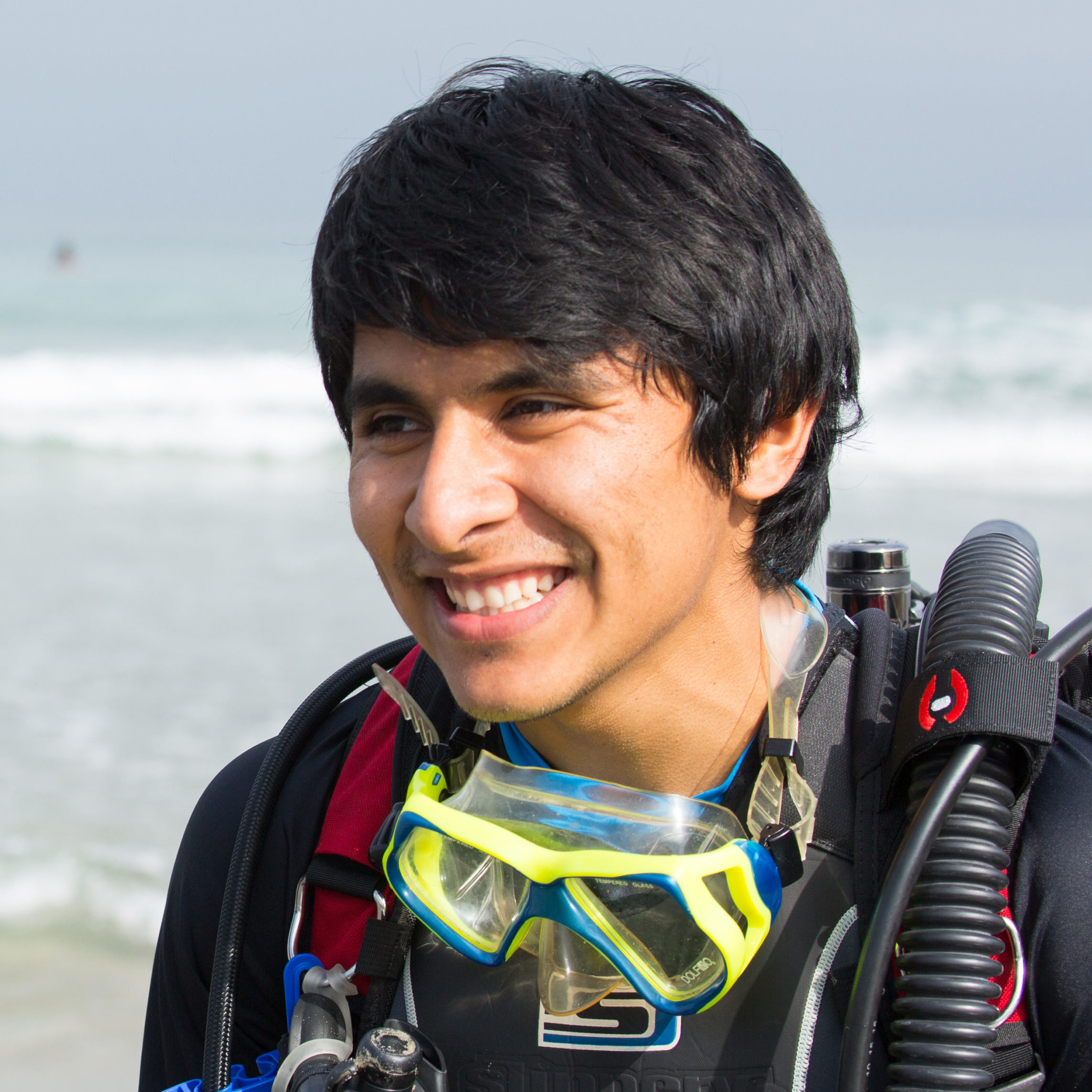
Alfredo Giron
André Hoffmann Fellow,
Stanford Center for Ocean Solutions & World Economic Forum Centre for the Fourth Industrial Revolution

Sonia Batten
Executive Secretary,
North Pacific Marine Sciences Organization
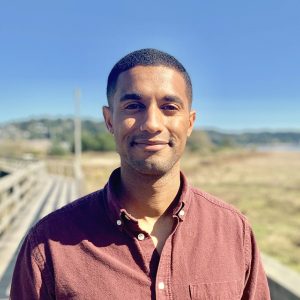
Dom Kone
Science Officer,
Ocean Science Trust
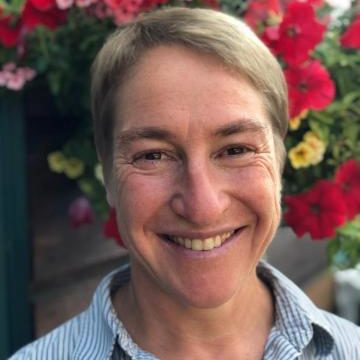
Anna Zivian
Senior Research Fellow,
Ocean Conservancy

Shauna Oh
Director,
California Sea Grant
December 2nd, 2021
10:30pm - 10:45pm - Opening & Status of the Fisheries
Julia Coates, CDFW CalCOFI Program Lead, CDFW
10:45am - 11:05am - CalCOFI Tribute – In memoriam
Roger Hewitt, Assistant Center Director, SWFSC
11:05am - 11:45am - State of the California Current Report
Juan Zwolinski, Project Scientist, SWFSC
11:45am – 12:15pm - State of the California Current: Community Discussion
Andrew Thompson (moderator), Research Fisheries Biologist, SWFSC
12:15pm - 12:30pm - Break
12:30pm - 2:45pm - Contributed Talks in Two Concurrent Sessions
Session 1: From Monitoring to Indicators and Management
Karen McLaughlin, Southern California Coastal Water Research Project
Ken Schiff, Southern California Coastal Water Research Project
The Southern California Bight (SCB) is host to one of some of the most productive ecosystems in the world, providing economic, cultural and recreational services to large populations living along the coast. However, it is also subject to significant pollutant inputs due to a highly urbanized coastland. Historically, environmental monitoring of this urban coastal environment has been temporally intensive, but spatially focused on narrow areas closest to regulated discharges, providing a potentially biased perspective of overall coastal sediment and water quality. Beginning in 1994 and conducted every five years since, nearly 100 regulated, regulatory, non-governmental and academic organizations have joined forces to implement the SCB Regional Marine Monitoring Program (the Bight Program). The Bight Program has affected management actions in the region by focusing management effort on habitats most impacted by poor sediment and water quality, highlighting improvements from previous management actions, and characterizing emerging threats to the coastal zone, such as ocean acidification. The most recent Bight program sampled nearly 400 locations, from brackish estuaries to offshore basins >1000m depth, using a probabilistic survey design and measuring multiple indicators of sediment quality including chemistry, toxicity, and infauna, water quality indicators including nutrients, harmful algal bloom toxins, dissolved oxygen, pH and aragonite saturation state, biological indicators of impairment, and indicators of human pathogens. Here we will highlight some key findings and trends from the Bight Program and opportunities to join the collaboration in 2023.
K. Alexandra Curtis, NOAA Fisheries Southwest Fisheries Science Center
Elizabeth M. Jaime, Ocean Associates, contractor for NOAA Fisheries Southwest Fisheries Science Center
Mark S. Lowry (retired), NOAA Fisheries Southwest Fisheries Science Center
Since June 1981, NOAA Fisheries biologists have been collecting and processing California sea lion scats from key rookeries on the southern Channel Islands, creating what is now a 40-year-long quarterly time series of forage for an important generalist predator. Female California sea lions from the southern Channel Islands primarily forage in the Southern California Bight, so the time series provides an unparalleled direct view of this region’s variable forage community and its relationship to the environment, to local wetfish fisheries, and to upper trophic levels. Continued funding for the southern Channel Islands sea lion diet time series has become increasingly uncertain following the retirement of its long-term lead principal investigator, putting the project at risk just as we begin to glimpse the radical shifts in store for the California Current Large Marine Ecosystem (CCLME) under global climate change. We outline the data available from this time series and discuss ongoing work and future potential for improving our understanding of the CCLME past, present, and future, and supporting evolution of fisheries management in the CCLME towards a multi-species, ecosystem-based framework.
Erica Mason, Scripps Institution of Oceanography, UC San Diego
Allison N. Kellum, Scripps Institution of Oceanography, UC San Diego
Jennifer A. Chiu, Moss Landing Marine Laboratories
Grant T. Waltz, California Polytechnic State University, San Luis Obispo
Samantha Murray, Scripps Institution of Oceanography, UC San Diego
Dean E. Wendt, California Polytechnic State University, San Luis Obispo
Richard M. Starr, Moss Landing Marine Laboratories
Brice X. Semmens, Scripps Institution of Oceanography, UC San Diego
Marine spatial planning efforts, including the management and monitoring of marine protected areas (MPAs), increasingly focus on the importance of stakeholder engagement. For 15 years, the California Collaborative Fisheries Research Program (CCFRP) has partnered volunteer anglers with researchers, the fishing industry, and resource managers to monitor groundfishes in California’s network of MPAs. While the program has succeeded in generating valuable data useful for evaluating MPA effectiveness, we know little about volunteer angler demography or the impact of participation on their perceptions and opinions on fisheries data or MPAs. We surveyed CCFRP volunteers to in part, learn whether participation in the program influenced volunteer angler opinions on the creation of MPAs in California and the factors driving opinion change. We found that a positive change in opinion on MPAs was likely to occur after considerable time (7+ years) engaged with CCFRP. In the context of CCFRP, our results serve the purpose of realizing the perceived benefits of citizen scientist participation in Collaborative Fisheries Research (e.g., increased awareness and trust in marine science/management). More broadly, human dimension surveys can be used as social indicators of consumer health and attitudes toward resource management efforts, thereby identifying areas where more directed public outreach and increased transparency in policy decisions are needed. Given the uncertainty of our fisheries in the face of climate change, keeping a gauge on the human dimensions of marine resource management will be important for maintaining and strengthening stakeholder engagement in the process.
Natalie Low, Central and Northern California Ocean Observing System (CeNCOOS)
Florybeth La Valle, Southern California Coastal Ocean Observing System
Henry Ruhl, Central and Northern California Ocean Observing System
Clarissa Anderson, Southern California Coastal Ocean Observing System
California’s statewide MPA network was established through the 1999 Marine Life Protection Act, with the goals of protecting marine populations, habitats, and ecosystems, improving fisheries sustainability, and enhancing coastal recreation, economies, and heritage. The 2022 state decadal review of the MPA network aims to assess its success in achieving these goals. However, state waters, including MPAs are impacted by different drivers across many temporal and spatial scales, including resource use, climatological and oceanographic variability, and long-term climate change. This presents a challenge in understanding the patterns and drivers affecting short- and long-term trajectories of change in MPAs. The Central and Northern California Ocean Observing System (CeNCOOS) and Southern California Coastal Ocean Observing System (SCCOOS) have integrated climatological, oceanographic, ecological, and model output data from multiple sources to develop an MPA Dashboard Tool for exploration, access, and visualization of MPA-relevant data to support researchers and managers in MPA assessments and decision-making. These take the form of a set of integrated Shiny applications in R: (1) Environmental and Ecological Time Series, (2) Projected Climate Change Indicators, (3) Ecological Models, (4) MPA Connectivity. Here, we present the use of these tools, as well as ongoing analyses on MPAs and climate refugia in California state waters.
Laura Rogers-Bennett, California Department of Fish and Wildlife / UC Davis
Marisol Garcia-Reyes, Farallon Institute
Meredith L. McPherson, UC Santa Cruz
Tom W. Bell, Woods Hole Oceanographic Institution
Bull kelp forests support species-rich nearshore marine ecosystems that provide a wide range of ecosystem services. Bull kelp ecosystem services include recreational and commercial fisheries, species diversity, sequester carbon and diminish waves and coastal erosion. During the 2014-2016 marine heatwave the previously stable kelp forest collapsed (>90%) and the ecosystem shifted to sea urchins barrens revealing the critical need for reliable indicators of kelp forest ecosystems. Here we develop indicators of the kelp forest canopy using oceanographic indexes, herbivore density and the presence predatory sea stars. We use a new time series of kelp canopy developed using Landsat 5, 7, and 8 imagery for northern California from 38 to 40 degrees latitude. We examine the relationship between the kelp canopy and the seasonal Multivariate Ocean Climate Indicator (MOCI) that focuses on the coastal region. MOCI synthesizes variability in coastal water temperatures, upwelling-favorable winds, atmospheric pressure, upwelling index, sea level height, as well as the influence of regional climate oscillations, and tracks warm and upwelling-poor conditions (positive), as well as cool and strong upwelling (negative) years. We find that winter MOCI values are a good early warning as they predict peak kelp canopy the following summer. We determine a threshold of 2.5 times the MOCI average (from 1991-2000) as the cut off for poor kelp conditions. However, in the most recent years, the relationship between MOCI and kelp breaks down as the abundance of herbivorous sea urchins increases. Therefore, we establish an indicator of high sea urchin abundance at 5 times the average density (from 2003-2013) and establish that predatory sunflower stars are locally extinct. Tracking indicators of kelp forest health and establishing informative thresholds are essential for proactive kelp ecosystem management and restoration.
Will Fennie, NOAA Southwest Fisheries Science Center
Rachel Seary, NOAA Southwest Fisheries Science Center
Barbara Muhling, NOAA Southwest Fisheries Science Center
Steven J. Bograd, NOAA Southwest Fisheries Science Center
Stephanie Brodie, NOAA Southwest Fisheries Science Center
Megan Cimino, NOAA Southwest Fisheries Science Center
Elliott L. Hazen, NOAA Southwest Fisheries Science Center
Michael G. Jacox, NOAA Southwest Fisheries Science Center
Elizabeth A. McHuron, University of Washington
Sharon Melin, NOAA Alaska Fisheries Science Center
Jarrod A. Santora, NOAA Southwest Fisheries Science Center
Justin J. Suca, NOAA Southwest Fisheries Science Center
Julie Thayer, Farallon Institute
Andrew R. Thompson, NOAA Southwest Fisheries Science Center
Pete Warzybok, Point Blue Conservation Science
Desiree Tommasi, NOAA Southwest Fisheries Science Center
Forage fishes are key energy conduits that transfer primary and secondary productivity to higher trophic levels and obtaining an understanding these pathways is central to ecosystem-based management. Elucidating environment-prey-predator links is critical to understand bottom-up forcing of food webs, and because novel environmental conditions induced by climate change may alter ecosystem and trophic dynamics. In the northeast Pacific, northern anchovy (Engraulis mordax) is an important forage species whose population size can change by orders of magnitude from year to year. Anchovy population sizes were low for most of the 21st century before resurging during the 2014-2016 North Pacific marine heatwave. Habitat suitability metrics from an anchovy species distribution model (SDM) incorporating anchovy population size and environmental conditions were assessed as indicators of the diet, distribution, and reproduction of California sea lions and three seabird species. This anchovy ecosystem indicator (AEI) was strongly positively correlated with diet composition of all species and the at-sea distribution of Common murre, Brandt’s cormorant, and California sea lion. Additionally, reproduction of cormorants and sea lions were strongly positively correlated with the AEI. Our newly developed AEI demonstrates the utility of forage species SDMs to creating ecosystem indicators that can serve as a template to guide ecosystem management in the northeast Pacific and worldwide.
Karen Martin, Pepperdine University
“Midnight spawning runs of California grunion, Leuresthes tenuis (Atherinopsidae), have fascinated people for generations, inspiring music, film, art, and television. Native to southern California, this marine fish surfs onto sandy beaches for spawning, sometimes in great numbers, on spring and summer nights following high semilunar tides. Eggs buried under the surface incubate in the warm, moist sand onshore until tides wash them out to hatch. Grunion runs are iconic for southern California beach culture, appreciated by locals and tourists. Monitoring the spawning runs of California Grunion is achieved with citizen scientists, the Grunion Greeters. Because of tidal cues, likely dates and times for runs can be forecast. Using the Walker Scale metric developed for this purpose, volunteer reports provide hyperlocal data on the locations, extent, size, and duration of the runs, as well as predators, hunters, and other information about the beach. While on land, embryos are vulnerable to anthropogenic disturbance from vehicles, beach grooming, oil spills, and habitat loss from coastal construction, as well as natural predation, erosion of sand, and high temperatures. Grunion are caught in a unique recreational fishery by bare hands, with a closed season during peak spawning. Runs are also impacted by artificial lights; California Grunion tend to avoid areas brighter than a full moon. Over the past 20 years, California Grunion runs have generally become less frequent and less abundant in southern California. Simultaneously, a northward habitat shift is underway, with new populations in San Francisco Bay and beyond. The sand temperatures where eggs incubate, as well as ocean warming, constrain grunion reproduction. The dependence on sandy beaches for critical reproductive habitat, their cultural appeal, and the ease of observation of spawning runs, make California Grunion a charismatic choice as an Indicator Species for sandy beach biodiversity and climate change. “
Pierre-Yves Hernvann, Institute of Marine Sciences, University of California Santa Cruz; Northwest Fisheries Science Center, NOAA
Isaac Kaplan, Northwest Fisheries Science Center, NOAA
Desiree Tommasi, Institute of Marine Sciences, University of California Santa Cruz; Southwest Fisheries Science Center, NOAA
Joe Bizzarro, Institute of Marine Sciences, University of California Santa Cruz; Southwest Fisheries Science Center, NOAA
Brian Wells, Southwest Fisheries Science Center, NOAA
Heidi Dewar, Southwest Fisheries Science Center, NOAA
Jarrod Santora, Institute of Marine Sciences, University of California Santa Cruz; Southwest Fisheries Science Center, NOAA
Barbara Muhling, Institute of Marine Sciences, University of California Santa Cruz; Southwest Fisheries Science Center, NOAA
In the California Current ecosystem, a portfolio of pelagic species, such as Pacific sardine (Sardinops sagax), Northern anchovy (Engraulis mordax), Pacific herring (Clupea pallasii), chub (Scomber japonicus) and jack (Trachurus symmetricus) mackerels and California market squid (Doryteuthis opalescens) support a wide variety of fish, mammal and seabird predators. Over the last decades, these so-called coastal pelagic species (CPS) have experienced substantial changes in their distribution that are predicted to continue in the near future. By affecting the quantity, diversity and quality of food available, such changes could affect the dynamic of the whole predator community in the California Current. To study the sensitivity of the predators to changes in CPS distribution in the California Current, we propose a novel ecosystem model-based approach. The present approach relies on a refined end-to-end food-web model integrating data from a comprehensive diet database and statistical species distribution models (SDMs) of both CPS and their predators. Forced by SDMs representing past CPS distribution for contrasting years, our Atlantis ecosystem model may be able to predict the spatiotemporal changes in the diet, the consumption and abundance of predators in the system. The model predictions may reflect predators’ ability to cope with CPS distribution shifts by maintaining food intakes compatible with their population requirements. Such ability could be linked to predators’ mobility, diet plasticity, and climate change impacts on their own distribution, and would provide a basis for the calculation of risk indicators in a climate change context. These indicators may be of interest in the near future to anticipate and adapt management and conservation of both emblematic protected species and commercially important fisheries.
James Smith, NOAA SWFSC
Mercedes Pozo Buil, NOAA SWFSC
Jerome Fiechter, UCSC
Desiree Tommasi, NOAA SWFSC
Michael Jacox, NOAA SWFSC
A useful measure of general climate stress is where and when novel habitats emerge. Here we evaluate ‘climate envelope novelty’ – a spatial indicator of system-level habitat change – in the California Current System (CCS), by quantifying the emergence of novel ocean conditions in multivariate physical-biogeochemical space. We use downscaled climate projections from three earth system models out to 2100 under emission scenario RCP8.5, and detect novelty at multiple spatial-temporal scales using two methods (n-dimensional hypervolumes and extrapolation detection). Even under high emissions, consistent novelty doesn’t appear until around 2040 and then only in small patches of Southern California and the Pacific North West. However, novelty increases rapidly after this (especially in warmer seasons), so that by 2060 up to 50% of the CCS in an average year has shifted to a novel local climate, which increases to 100% by 2090. These results are for the average year, and the first years to experience these levels of novelty typically occur 20 years sooner. The ecosystem could increasingly experience novel combinations of warmer temperatures, lower dissolved oxygen (especially inshore), and a shallower mixed layer (especially offshore). The emergence of extensive local novelty year-round has implications for the required ubiquitous redistribution or adaptation of CCS ecology, and the emergence of extensive regional novelty in warmer months has implications for bioregional change and emerging fisheries. This multi-scale novelty metric could be a useful general indicator of change, and tailored to specific species, species groups, or fisheries, or calculated relative to different historical windows (e.g. 5 years, 10 years, 50 years).
Felipe Quezada, University of California Santa Cruz
Desiree Tommasi, Institute of Marine Sciences UCSC
Stephen Stohs, NOAA SWFSC
Isaac Kaplan, NOAA NWFSC
Jonathan Sweeney, NOAA PIFSC
Barbara Muhling, Institute of Marine Sciences UCSC
Fishers for forage species typically face a set of possible choices, called fishing portfolios, that allow them to diversify target species and reduce income risk. Switching among species is more feasible for vessels that share similar gear and methods for fishing. More diverse portfolios may increase fisher resilience to climate-driven changes in target species spatial distributions and availability. However, regulations and other constraints (e.g., port constraints on where landings of a particular species may occur, or permit requirements) may reduce the degree of substitution we observe. In this study, we analyze how historical changes in forage species distribution and the closure of the Pacific sardine fishery affected landing substitution between three coastal pelagic species: Pacific sardine, market squid, and Northern anchovy. Using a discrete choice modeling approach, we also study how spatial distribution and closure affected the coastal pelagic species fisheries’ participation decisions over the 2000-2019 period. Our preliminary results show strong substitution between market squid and Pacific sardine when both were available, while the Pacific sardine closure in 2015 was associated with reduced market squid landings suggesting lower fishers’ participation in this fishery. We plan to use species distribution model projections to study how landings and participation change under different future climate change scenarios.
Julia Mason, Environmental Defense Fund
Jacob Eurich (co first author), National Center for Ecological Analysis and Synthesis
Jacqueline Lau (co first author), ARC Centre of Excellence in Coral Reef Studies, James Cook University
Willow Battista, EDF
Christopher Free, UCSB
Katherine Mills, Gulf of Maine Research Institute
Kanae Tokunaga, Gulf of Maine Research Institute
Lily Zhao, UCSB
Mark Dickey-Collas, ICES
Mireia Valle, AZTI Marine Research, Basque Research and Technology Alliance
Gretta Pecl, University of Tasmania
Joshua Cinner, James Cook University
Tim McClanahan, Wildlife Conservation Society
Whitney Friedman, NCEAS/The Nature Conservancy
Edward Allison, WorldFish
Claudio Silva, Pontificia Universidad Catolica de Valparaiso
Eleuterio Yanez, Pontificia Universidad Catolica de Valparaiso
Maria Barbieri, Pontificia Universidad Catolica de Valparaiso
Kristin Kleisner, EDF
In a changing climate, there is an imperative to build coupled social-ecological systems – including fisheries – that can withstand or adapt to climate stressors. Although resilience theory identifies system attributes that supposedly confer resilience, these attributes have rarely been clearly defined, mechanistically explained, nor tested and applied to inform fisheries governance. Here, we develop and apply a comprehensive resilience framework to examine fishery systems across (i) ecological, (ii) socio-economic, and (iii) governance dimensions using five resilience domains: assets, flexibility, organization, learning, and agency. We distill and define 38 attributes that confer climate resilience from a coupled literature- and expert-driven approach, describe how they apply to fisheries and provide illustrative examples of resilience attributes in action. Our synthesis highlights that the directionality and mechanism of these attributes depend on the specific context, capacities, and scale of the focal fishery system and associated stressors, and we find evidence of interdependencies among attributes. Overall, however, we find few studies that test resilience attributes in fisheries across all parts of the system, with most examples focusing on the ecological dimension. As such, meaningful quantification of the attributes’ contributions to resilience remains a challenge. Our synthesis and holistic framework represent a starting point for critical application of resilience concepts to fisheries social-ecological systems.
Rachel Seary, Institute of Marine Sciences-Fisheries Collaborative Program, University of California, Santa Cruz/ Fisheries Ecology Division, Southwest Fisheries Science Center
Jarrod A. Santora, Fisheries Ecology Division, Southwest Fisheries Science Center/Department of Applied Math, University of California, Santa Cruz
Desiree Tommasi, Institute of Marine Sciences, University of California, Santa Cruz/Fisheries Research Division, Southwest Fisheries Science Center
Andrew Thompson, Fisheries Research Division, Southwest Fisheries Science Center
Steven Bograd, Environmental Research Division, Southwest Fisheries Science Center
Kate Richerson, Fishery Resource Analysis and Monitoring Division, Northwest Fisheries Science Center
Dan Holland, Conservation Biology Division, Northwest Fisheries Science Center
Stephanie Brodie, Institute of Marine Sciences, University of California, Santa Cruz/Environmental Research Division, Southwest Fisheries Science Center
Understanding ecosystem dynamics which lead to increased whale entanglement risk for the Dungeness Crab Fishery has benefited from the development of ecosystem indicators for the California Current Ecosystem. Management tools used to reduce entanglement risk, for example temporary area restrictions including closures due to marine life concentrations, may have severe socio-economic consequences for stakeholders that must be evaluated at the individual fisher and fishing community level. Achieving ecosystem-based fisheries management which successfully reduces whale entanglements, while promoting a healthy Dungeness Crab Fishery, along with other West Coast fisheries, will benefit from the addition of socio-economic indicators that relay information on the impact of such management tools on the fishing community. The objective of our analysis is therefore to present retrospective revenue loss estimates from whale entanglement risk related closures to the Dungeness crab fishery in California. Retrospective estimates of potential revenues during seasons subject to closure periods, using hurdle models fitted with pre-season crab abundance estimates and historical vessel level characteristics, are compared with observed revenues to arrive upon loss estimates. Consideration of this information alongside existing ecological indicators will be necessary to inform future risk assessment decisions for this fishery.
Marina Frants, Scripps Institution of Oceanography
Chieh Hsu, U.C. San Diego
Erin Satterthwaite, Scripps Institution of Oceanography
The California Current System is a rich and diverse ecosystem, supporting a wide variety of marine plant and animal species that provide substantial economic, social and cultural benefits to coastal communities. However, it also faces significant pressure from human activities such as fishing, tourism, and commercial and residential development. To understand the impact of human activity on the marine ecosystem, researchers require long-term ocean data. At Scripps Institution of Oceanography, the California Cooperative Oceanic Fisheries Investigations (CalCOFI) ecosystem observing program and the California Sea Grant program are working in partnership to develop OceanView, an interactive citizen science app intended to supplement existing long term observations in the California Current. The app will allow recreational fishers to upload detailed information on species they caught or observed. Users will be able to record the species name, the time and location of the observation, and the size and weight of individual specimens, as well as upload a photo. To aid users with species identification, the app will provide a search function that utilizes National Oceanic and Atmospheric Administration’s (NOAA) FishWatch database, as well as suggestions from an image recognition algorithm. To motivate users to to use the app, we will provide additional functionality, including a real-world map providing locations and visitor information of California’s Marine Protected Areas, and the ability for users to view statistical information of observations at their location. The collected data can be used in conjunction with existing long-term sampling to support research activities such as species population and distribution modeling and detection of invasive species. In addition, we hope that allowing the general public to become more involved in ocean observations will raise awareness of the importance of marine research and conservation.
Brian Wells, National Oceanic and Atmospheric Administration
Jarrod A. Santora, SWFSC, NOAA Fisheries
We present a conceptual understanding of how empirical studies and biophysical models can be used to provide ecosystem benefits. Empirical observations and statistical modeling provide measures of the states of individual ecosystem components, a conceptual understanding of the system, and the opportunity to develop functional relationships within the ecosystem. This provides indicators on which to assess risks to ecosystem components, the opportunity for semi-quantitative analyses from a conceptual model, and sensitivity analysis to evaluate the leverage ecosystem components have on accomplishing managerial objectives. Empirical outputs and diagnosed processes can be coupled to biophysical models to evaluate spatiotemporal variability in ecosystem structure and functionality retrospectively and prospectively. Further, by quantifying the relationships between the environment and spatiotemporal variability of managed ecosystem components, we can estimate the spatiotemporal responses of these components to future climate trends and variability. These coupled, numerical approaches provide a spatiotemporal coverage of ecosystem state, inform near and long-term risks, and can be used to evaluate management strategies.
Session 2: Oceanography & Fisheries
Alice Ren, Scripps Institution of Oceanography, UCSD
Dan Rudnick, Scripps Institution of Oceanography, UCSD
The California Current System in the eastern North Pacific Ocean has experienced record high temperatures since the marine heatwave of 2014-2016. Here we show, through a compilation of data from shipboard hydrography, ocean gliders, and the Argo floats, that a high-salinity anomaly affected the California Current System from 2017-2019 in addition to the anomalously high temperatures. The salinity anomaly formed in 2015 in the North Pacific Subtropical Gyre and was subsequently advected into the California Current System, in a generation mechanism different from the events leading to the marine heatwaves of 2013/2014 and 2019 in the North Pacific. The salinity anomaly was unique in at least 16 years with an annual mean deviation from the long-term average greater than 0.2 and anomalies greater than 0.7 observed offshore. Our results imply that different source waters were found in the California Current from 2017-2019, with the near-surface California Current salinity rivaling that of the California Undercurrent.
Joko Sampurno, Université catholique de Louvain
Emmanuel Hanert, Earth and Life Institute (ELI) / Université Catholique de Louvain (UCLouvain)
Water-level modeling is an essential non-structural measure against compound flooding in river deltas, whose vulnerability has increased under climate change. Flooding model can follow a process-based or data-based approach. The former can be computationally expensive, preventing such models from operational use for local water management agencies with limited computational resources. As an alternative, a data-based approach based on machine learning, is a promising tool to tackle that issue. Nevertheless, it requires sufficient data to train the machine learning algorithm. Here, we attempt to fill this gap by proposing an integrated hydrodynamic and machine learning approach to predict compound flooding in areas where the computational resources are limited, and the observational data are scarce. As a case study, this integrated approach is implemented in Pontianak, the densest urban area over the Kapuas River delta, Indonesia. The hydrodynamic model first simulates several compound flooding scenarios, and the outputs are then used to train the machine learning model. To obtain a robust machine learning model, here we consider three machine learning algorithms, i.e., Random Forest, Multi Linear Regression, and Support Vector Machine. The results show that this integrated scheme is successfully working, and the Random Forest algorithm is the most accurate algorithm to predict flooding hazards. Therefore, a machine learning model with the Random Forest algorithm is proposed as the most reliable model to assess the compound flood hazards in the study area. The model can predict ten out of seventeen compound flooding events during the testing phase with NSE ranging from 0.61 to 0.72 and RMSE 0.11 m.
Mark D. Ohman, Scripps Institution of Oceanography
Linsey M. Sala, Scripps Institution of Oceanography
Eliya M. Baron Lopez, Ocean Law and Policy Institute, Korea Institute of Ocean Science and Technology
Sven Gastauer, Thunen Institute of Sea Fisheries, Bremerhaven, Germany
Tristan Biard, University of the Littoral Côte d’Opale, France
David Demer, Southwest Fisheries Science Center
Laura E. Lilly (presenter), Hatfield Marine Science Center, Oregon State University
Pyrosomes are suspension-feeding, colonial pelagic tunicates that occur intermittently in the California Current Ecosystem. Their presence has been particularly conspicuous in epipelagic waters since the advent of the NE Pacific Warm Anomaly of 2014-15, with noteworthy abundances reported from Baja California to the Pacific Northwest. However, in spring and summer of 2021, a widespread outbreak occurred. In summer surveys from Cape Flattery to El Rosario, the Trawl Team from SWFSC-FRD found maximal biomass off Central CA. In July-August, the CCE-LTER group documented pyrosome colonies (Pyrosoma atlanticum) from the coast to at least 800 km offshore of Central CA. Off southern California, colonies were essentially ubiquitous in both coastal and oceanic waters. Some beach strandings were documented. We draw upon CCE-LTER/CalCOFI mesozooplankton time series, digitally Zooscanned PRPOOS net samples, in situ digital imaging by UVP5, vertically stratified MOCNESS sampling, and the SWFSC-FRD’s Trawl Surveys to place the current outbreak in context. We illustrate the timing of the recent irruption and show that the present pyrosome outbreak has clear antecedents in the 1950s and 1960s. We address the spatial distribution of tetrazooid and later larvae relative to adult colonies and illustrate the spatial extent of the irruption. We document colony size-dependent changes in vertical distributions, including the ontogenetic onset of Diel Vertical Migration behavior.
Such irruptions have potential consequences for altering Carbon export, via both fecal pellet production and pulsed food falls of pyrosome colonies to the deep sea benthos. The effect of pyrosome outbreaks on dissolved O2 consumption and O2 distributions remain unknown. The widespread occurrence of these visually conspicuous colonies represents a foraging opportunity for diverse consumers, but with unknown consequences for coastal fisheries if pyrosome colonies are of suboptimal nutritional quality.
María Moreno-Alcántara, Instituto Politécnico Nacional – Centro Interdisciplinario de Ciencias Marinas
Gerardo Aceves-Medina, Instituto Politécnico Nacional – Centro Interdisciplinario de Ciencias Marinas
Bertha E. Lavaniegos-Espejo, Centro de Investigación Científica y de Educación Superior de Ensenada
Martín Hernández-Ayón, Instituto de Investigaciones Oceanológicas – Universidad Autónoma de Baja California
Jaime Gómez-Gutiérrez, Instituto Politécnico Nacional – Centro Interdisciplinario de Ciencias Marinas
Sylvia P.A. Jiménez-Rosenberg, Instituto Politécnico Nacional – Centro Interdisciplinario de Ciencias Marinas
Atlantids are holoplanktonic gastropods that bear an aragonitc shell and live in the first 250 m of the water column. It has been suggested that in the long term, they might be affected by ocean acidification. Recently, hypoxic and aragonite undersaturated waters have been observed near surface in the northern California Current System (CCS). However, little is known about how the distribution and abundance of atlantids vary regarding changes in the environmental conditions worldwide. The strongest seasonal changes in plankton species composition and environmental conditions, occur between winter and spring, mainly related to upwelling and water masses distribution. Other important changes in the environment happen in the inter-annual scale related to ENSO (La Niña 2010-2012, El Niño 2015-2016) and marine heat waves (2013-2015). The aim was to determine the species composition and the environmental factors that affect the seasonal and interannual variation of the distribution and abundance of Atlantidae species in the Pacific coast off Baja California between 2012-2016, based in four oceanographic cruises carried out in winter and three in spring, with 284 zooplankton samples analyzed. We found 14 species, where winters were more diverse than springs, with the most species recorded during the warm anomalies observed on the winters of 2014 and 2016. Overall, Atlanta californiensis was the most abundant mainly in spring and its relative abundance decreased during the warm anomalous winters, when A. lesueurii increased, and A. turriculata and Atlanta sp 1 were exclusively present. Through canonic correspondence analyses, we determined that atlantids distribution in winters was mainly correlated to physical factors (temperature, salinity, and water masses in the area) while in spring, their distribution was mainly correlated with chemical factors (hypoxic conditions and the aragonite saturation horizon depth).
Montana McLeod, Oregon State University
Will White, Oregon State University
Francis Chain, Oregon State University
Sarah Henkel, Oregon State University
The Dungeness crab fishery is strategically managed such that in a given year, the entirety of the legal-sized male crab cohort (4-5 year-olds) are expected to be harvested within the season. As such, our ability to forecast the scale of the harvest in a season depends on developing reliable estimates of the mortality rate of young sub-legal-size crabs in the previous year. The natural mortality rate is also an important parameter in population and bio-economic models applied to the Dungeness crab fishery. Using trap survey time series collected in Washington and Oregon, we estimated the natural mortality rate of sub-legal crabs. Estimating the mortality rate of crabs from such surveys is challenging because the sampling period spans the molting season. Furthermore, estimates must account for the probability of molting and the change in size due to molting. Our approach to accounting for molting transitions leads to unexpectedly high estimates of natural mortality. We are re-evaluating the best way to account for both molting and mortality in within-season surveys. Mortality rates can improve our understanding of crab population dynamics and our ability to forecast crab landings.
Gregory Krutzikowsky, Oregon Department of Fish and Wildlife
Troy Buell
Market squid have been fished for and landed in Oregon intermittently since the 1980s. The market squid fishery off Oregon since has been more consistent in recent years with 53 different vessels participating in the fishery from 2016 through 2021. The highest landings on record in Oregon occurred in 2020 with approximately 4,671 mt landed. We will provide a brief overview of the fishery in Oregon along with updates on recent management activities related to the fishery.
Tim Baumgartner, CICESE
The Santa Barbara Basin is an enclosed basin approximately 680 meters deep with hypoxic bottom waters leading to preservation of annual to near annual laminae (varves) containing fish scales composed of collagen fibers covered with calcium phosphate (hyrdroxyapatite). Changes in the modern sardine biomass between 1932 and 2000 can be explained by multidecadal changes (1917-1997) in SST recorded at Scripps Pier in La Jolla, CA. The sardine population began to decline in 1943 and by 1951 had totally collapsed. This can be shown by comparing CPUE (Catch per Unit Effort) to coastal SST over the period from 1932 to 1951. After 1943 the ocean climate had abruptly shifted from the preferred habitat of the sardine population to unfavorable conditions. By the early 1950s the population had contracted southward into waters off Baja California indicated by the distribution and abundance of sardine eggs in 1953 and 1954. However, by 1986 the population had begun to recover, with the number of age-1 juveniles increasing as coastal SST began warming. Estimate biomass of sardines were reconstructed from AD 470 through 1970 using sardine scales in the sediments of the Santa Barbara Basin at 5-year intervals. The data from the paleo record is compared to VPA (Virtual Population Analysis) from 1930 to 2000 to indicate the continuity of the reconstructed record into the 20th century. A smoothed filtered hindcast of high and low frequency components from the rates of sardine scale deposition. The high frequency component (filtered to represent 25-100 years) displays multidecadal variability, while the low frequency component (filtered to represent variability greater than 100 years) indicates that the scale deposition record has captured changes in successive periods of paleoclimate such as the “Roman Warmth” and the “Little Ice Age”.
Andrew Thompson, NOAA/SWFSC
Noah Ben-Aderet, Ocean Protection Council
Noelle Bowlin, NOAA/SWFSC
Dovi Kacev, Scripps Institution of Oceanography
Rasmus Swalethorp, Scripps Institution of Oceanography
William Watson, NOAA/SWFSC
The 2014-2016 Northeast Pacific Marine Heatwave (MHW) induced the warmest 3-year period on record in the California Current Ecosystem. We tested whether larval fish assemblage structure, phenology and diversity dynamics were comparable to past warming events from 1951-2013. First, we hypothesized, based on past observations of biological effect of warming, that mesopelagic species with southern distributions relative to southern California and Pacific sardine Sardinops sagax (a coastal pelagic species) would increase during the MHW while northern mesopelagics and northern anchovy Engraulis mordax (coastal pelagic) abundances would decline. Similar to past warming, southern mesopelagics increased and northern mesopelagics decreased. Unexpectedly, however, a common southern mesopelagic, Mexican lampfish Triphoturus mexicanus, was approximately three times more abundant than the previous annual high. Further, whereas sardine abundance did not increase, larval anchovy abundance rose to near-record highs in summer 2016. Second, we hypothesized that fishes would spawn earlier during the MHW. Fishes did not spawn in an earlier season within a year, but five of six southern mesopelagic taxa spawned earlier than typical within winter and spring. Third, we predicted that species richness would increase moderately due to an influx of southern and exodus of northern species. Richness, however, was very high in all seasons and the highest ever during the summer as multiple species with primarily southern distributions were recorded spawning for the first time in southern California. The richness of northern species was also unexpectedly high during the MHW. Northern species likely persisted in the study area because in addition to the warm water, pockets of cold water were consistently present. The larval fish assemblage during the 2014-2016 MHW was unusual relative to previous warm years because of the combination of record high mesopelagic abundance and species richness, the increase in anchovy, and the presence of rare northern species.
Blair Winnacott, Department of Fisheries Biology, Humboldt State University
Eric Bjorkstedt, Department of Fisheries Biology, Humboldt State University / NOAA Fisheries, SWFSC
We identified larval fishes collected along the Trinidad Head Line (41°N) from late 2007 through 2019, augmenting visual analysis with genetic identification of visually cryptic larval rockfishes (Sebastes spp.), to characterize variability in the ichthyoplankton assemblage in coastal waters off northern California in the context of climate forcing. A sharp and persistent increase in the overall abundance of larval fishes (despite declines in a few species with cool-water affinities) and species richness coincided with an unprecedented marine heatwave (MHW) that manifested first with the arrival of the “Warm Blob” in coastal waters in late 2014 and was subsequently reinforced by a strong El Niño event in 2015-16. During this event, several rare or previously unrecorded taxa occurred in our collections. Our observations suggest onshore advection of larvae of oceanic species and reduced offshore dispersion of coastal species’ larvae, but the starkest changes in assemblage structure appear to be associated with poleward shifts in the spawning distribution of adult stocks marked by the appearance (at high abundance) of several species that typically spawn well to the south of our sampling region (e.g., Genyonemus lineatus, Merluccius productus, and Sardinops sagax). Resolving aggregate Sebastes to species highlights similar patterns, including the arrival of new species (e.g., Sebastes jordani) with the 2015-16 El Niño that would have otherwise gone undetected. These results lay the foundation for extending the use of larval fish assemblages as indicators of ecosystem responses to climate forcing in this important transitional region of the California Current.
Brittany Schwartzkopf, Southwest Fisheries Science Center
Emmanis Dorval, Lynker Technologies, LLC, under contract with Southwest Fisheries Science Center
Kelsey C. James, Southwest Fisheries Science Center
Jonathan M. Walker, Institute for Marine Sciences, Fisheries Collaborative Program, under partnership with NOAA National Marine Fisheries Service
Owyn E. Snodgrass, Southwest Fisheries Science Center
Dianna L. Porzio, California Department of Fish and Wildlife
Brad E. Erisman, Southwest Fisheries Science Center
Ageing of fish has become widely important due to the increased use of age-structured stock assessment models, such as those used to assess coastal pelagic species (CPS) biomass along the U.S. Pacific west coast. Recently, the Pacific Fisheries Management Council recommended that the central subpopulation of Northern Anchovy (CSNA) be assessed in 2021, 26 years after the last assessment in 1995. To inform the upcoming stock assessment, we aged CSNA collected in spring 2017 and 2021 and summer 2015-2019 during trawl surveys conducted by the Southwest Fisheries Science Center and from fishery samples collected monthly from port landings by the California Department of Fish and Wildlife in 2014-2021. Age was determined using whole sagittal otoliths and an assumed June 1st birthdate. CSNA ages ranged from 0 to 6 years for both the trawl survey and fishery samples. Samples from both datasets were dominated by age 0-, 1-, and 2-year-old fish (88% and 90%, respectively) and a low proportion of age 4+ individuals (8% and 2%, respectively). In general, greater numbers of smaller and younger fish were caught in the trawl survey from 2015-2017, with a higher frequency of larger and older fish observed from 2018-2021. Conversely, similar lengths and ages were consistently observed in the fishery samples from 2014-2021, although slightly larger fish were observed in 2017. As Northern Anchovy have not been aged for more than two decades and no age validation studies have been completed, differences in age interpretation among readers and years were observed. Age-reading variability among readers and years is expected to decrease as the collective understanding of the patterns of opaque and translucent depositions increases through an increased focus on age validation research (e.g. OTC-marked otoliths) and rapid age estimation methods (e.g. Fourier transform near-infrared spectroscopy), which are priorities moving forward.
Brad Erisman, NOAA NMFS Southwest Fisheries Science Center
Brittany Schwartzkopf, NOAA NMFS Southwest Fisheries Science Center
Emmanis Dorval, Lynker Technologies, LLC
Kelsey James, NOAA NMFS Southwest Fisheries Science Center
Jonathan Walker, UC Santa Cruz
Owyn Snodgrass, NOAA NMFS Southwest Fisheries Science Center
Dianna Porzio, California Department of Fish and Wildlife
The Northern Anchovy (Engraulis mordax Girard) is a monitored species under the Coastal Pelagic Species Fishery Management Plan, and following the Pacific Fisheries Management Council recommendation, the central subpopulation of Northern Anchovy (CSNA) will be fully assessed in December 2021. To inform the assessment, we compiled and analyzed available data on the reproductive biology of female Northern Anchovy to generate updated estimates of length and age at sexual maturity. Female CSNA gonads collected during the 2017 DEPM and the 2021 spring CPS surveys were histologically processed and classified as mature or immature using standardized terminology. Logistic, non-linear regression was used to generate maturity ogives and estimate length and age at maturity. Initial model runs to estimate length at maturity for the CSNA indicated the possibility of a small year effect, which through further analyses was attributed to the inclusion of samples of females collected in colder waters north of the main spawning area (i.e., north of Point Conception) during the 2021 trawl survey. Therefore, samples outside the Southern California Bight were excluded, and revised estimates of length at maturity were nearly identical between 2017 and 2021. The pooled dataset composed only of fish sampled from the Southern California Bight was used to generate a single estimate of length at maturity (L50) of 98.2 mm standard length. A von Bertalanffy growth function using all aged females from 2015 to 2021 produced an estimated age at maturity (A50) of -0.085 years from the L50, indicating that more than 50% of female CSNA were mature at age 0. Future research will focus on evaluating the accuracy and utility of using visual (macroscopic) methods to estimate length at maturity in CSNA by comparing results to those verified through histological examinations.
Kelly Vasbinder, University of California Santa Cruz
Jerome Fiechter, University of California Santa Cruz
Brian Wells, NOAA Fisheries SWFSC Fisheries Ecology Division
James J. Anderson, School of Aquatic and Fishery Sciences, University of Washington
Jarrod Santora, NOAA Fisheries SWFSC Fisheries Ecology Division
Nate Mantua, NOAA/NMFS Southwest Fisheries Science Center
Steve Lindley, Fisheries Ecology Division Director, Southwest Fisheries Science Center
David Huff, Estuarine and Ocean Ecology Program Manager Northwest Fisheries Science Center
The time from ocean entry to the end of the first year is an important period for determining the survival of fall run juvenile Chinook salmon. An ecosystem modeling approach is ideal for exploring the impact of spatial and temporal variability in predation pressure on juvenile salmon survival. Our ecosystem model incorporates a ROMS submodel for hydrodynamics, a Nutrients-Phytoplankton-Zooplankton (NPZ) submodel for generating prey fields, and an individual based model (IBM) for juvenile Chinook salmon. The salmon IBM consists of a series of modules representing growth, mortality, behavioral movement, and predation interactions. In this project, we expand the mortality submodel to include predation in the form of a central place feeder (common murre in our case study), with the potential for other predator types to be included in future versions. We calculate predation mortality through the use of predator and prey size distributions and their interaction probability. Temperature and krill fields from the ROMS and NPZ submodels are used in the IBM for calculating juvenile salmon growth and inform behavioral movement. Interactions with the central place predator depend on the size of the juvenile salmon, whereby individuals that grow past the size of the predator’s prey distribution will escape predation. This size-dependent approach to predation mortality means that factors impacting the growth of salmon shortly after ocean entry can also impact predator-prey dynamics. We use a 21-year time series from 1990-2010 to explore interannual variability in growth and survival of juvenile Chinook salmon off central California under predation pressure from common murre for which spatiotemporal patterns of abundance and diet composition are available. Our results illustrate the effect of different predation scenarios on population-level characteristics and lay the foundation for establishing ecosystem indictors of juvenile Chinook survival at sea off central California.
Cathleen Vestfals, Cooperative Institute for Marine Ecosystems and Resources Studies, Oregon State University/Resource Assessment and Conservation Engineering Division, Alaska Fisheries Science Center, NOAA
Kristin Marshall, Fishery Resource Analysis and Monitoring Division, Northwest Fisheries Science Center, NOAA
Nick Tolimieri, Conservation Biology Division, Northwest Fisheries Science Center, NOAA
Mary Hunsicker, Fish Ecology Division, Northwest Fisheries Science Center, NOAA
Aaron Berger, Fishery Resource Analysis and Monitoring Division, Northwest Fisheries Science Center, NOAA
Ian Taylor, Fishery Resource Analysis and Monitoring Division, Northwest Fisheries Science Center, NOAA
Michael Jacox, Environmental Research Division, Southwest Fisheries Science Center, NOAA/Physical Sciences Laboratory, NOAA
Brendan Turley, Cooperative Institute for Marine & Atmospheric Studies, University of Miami – Rosenstiel School of Marine and Atmospheric Science/Southeast Fisheries Science Center, NOAA
Understanding drivers of recruitment variability in marine fishes remains an important challenge in fish ecology and fisheries management. Here, we use oceanographic model output to develop indicators of recruitment variability for an ecologically important and commercially valuable species in the California Current Ecosystem (CCE), Pacific hake (Merluccius productus). Hake recruitment is highly variable, yet the mechanisms underlying this variability are poorly understood, resulting in high uncertainty in the estimates of stock status and future projections in the stock assessment model. We developed a 7-stage conceptual life-history model for hake (from pre-spawning females through age-0 juveniles) in the CCE to generate stage- and spatiotemporally-specific hypotheses about the physical and biological variables that likely influence hake recruitment. We examined relationships between ocean condition indicators obtained from Regional Ocean Modeling System (ROMS) output and hake recruitment using linear models fit to annual recruitment deviations described in the 2020 hake stock assessment. We also considered indices of prey and predator abundance and local- and basin-scale oceanographic processes. Multiple stage-specific mechanisms were found to affect hake recruitment across their early life history, with conditions during the early larval and adult preconditioning stages playing important roles. These findings improve our understanding of hake recruitment drivers and have the potential to influence the stock assessment process, ecosystem assessments, and management strategy evaluations.
Robert Wildermuth, University of California Santa Cruz
Robert P. Wildermuth, University of California Santa Cruz / NOAA Fisheries Southwest Fisheries Science Center
Desiree Tommasi, University of California Santa Cruz / NOAA Fisheries Southwest Fisheries Science Center
Peter Kuriyama, NOAA Fisheries Southwest Fisheries Science Center
James Smith, NOAA Fisheries
Isaac Kaplan, NOAA Fisheries Northwest Fisheries Science Center
Pelagic forage fishes exhibit large, cyclic fluctuations in biomass driven by periods of highly successful recruitment followed by stock collapse. Fluctuations in ocean temperatures, currents, and productivity resulting from climate change may disrupt or alter these recruitment cycles, and fisheries management must adapt to this added uncertainty if sustainable harvest of forage species is to continue. Using Pacific sardine as a case study, we conducted a management strategy evaluation to assess the robustness of current and alternative environmental harvest control rules under a variety of recruitment variability scenarios. The current control rule for Pacific sardine determines catch limits for the northern subpopulation as a function of biomass estimates from the stock assessment and an environmental correction using average sea surface temperature measured by CalCOFI. Alternative harvest control rules tested here included a constant harvest rate and rules developed to account for reliance of predators on forage fish prey. We tested each of these rules against scenarios in which randomly generated recruitment deviations were produced from distributions reflecting historical estimates, with and without autocorrelation, or in which the mean recruitment followed a trend as may be expected as climate changes. Successful harvest control rules had higher mean stock biomass and catch, with low catch variability, few fishery closures, and shorter stock rebuilding periods. Our study explores the possibilities and potential impediments to sustainably harvesting highly variable forage fish stocks in an increasingly dynamic ocean.
2:45pm - 3:00pm - Closing Remarks
3:00pm - 4:00pm - Break
4:00pm - 8:00pm - Local Hub Social Gatherings
Location: New English Brewing (11545 Sorrento Valley Rd. #305, San Diego, CA 92121)
Time: 5:00pm – 8:00pm
Organizer: Angela Klemmedson
Details: Look for people wearing CalCOFI shirts! Family, friends, and dogs are all welcome.
Food truck: The Craft Taco Truck
Please email Angela so we have a rough estimate of how many people plan to attend.
Location: Campfire (2725 State St, Carlsbad, CA 92008)
Time: 5:00pm – 7:00pm
Organizer: Clarissa Anderson
Details: Ask hostess for CalCOFI Conference party. Restaurant is open-air so dress warmly. There are areas for kids to play.
Location: Night Lizard (607 State St, Santa Barbara, CA 93101)
Time: 5:30pm – 8:00pm
Organizer: Chris Free
Details: There will be a sign on the table. Please coordinate with Chris if you plan to attend.
Location: Fremont Brewing’s Urban Beer Garden (1050 N 34th St, Seattle, WA 98103)
Time: 5:00pm – 7:00pm
Organizer: PY Hernvann (wearing pumpkin-salmon color pants + jungle shirt)
Location: Alvarado Street Brewery (426 Alvarado Street Monterey, CA 93940)
Time: 5:00pm – 9:00pm
Organizer: Rachel Seary
Details: Ask hostess for the CalCOFI Conference party.
Location: TBD
Time: 5:00pm – 7:00pm
Organizer: Karen Martin
Details: We will have a reserved area for our group, fish attire recommended. Friends and family welcome, accessible by Big Blue Bus #7, please let Karen know if you plan to come so we have sufficient space. It’s happy hour!
Location: Santa Cruz Mountain Brewery (401 Ingalls St. #27, Santa Cruz, CA 95060)
Time: 4:00pm – 8:00pm
Organizer: Jenna Contuchio
Details: Wear a color representative of water, whatever that is to you! We will be to the right side of the staircase. You can tell the host you are with the CalCOFI group.
There is usually a food truck and food is served at the brewery as well. Feel free to reach out to Jenna with any questions!
Location: Wolf Tree Brewery and Taproom (450- SE Harborton Street, Newport)
Time: 4:00pm – 7:00pm
Organizer: Ric Brodeur
Details: Will be wearing Hawaiian fish print shirt. There will be inside and outside covered seating so dress appropriately. Fish attire or Hawaiian shirts suggested. Food available if you want to eat there.